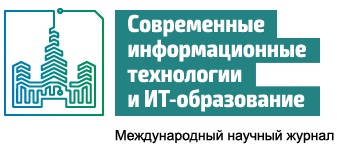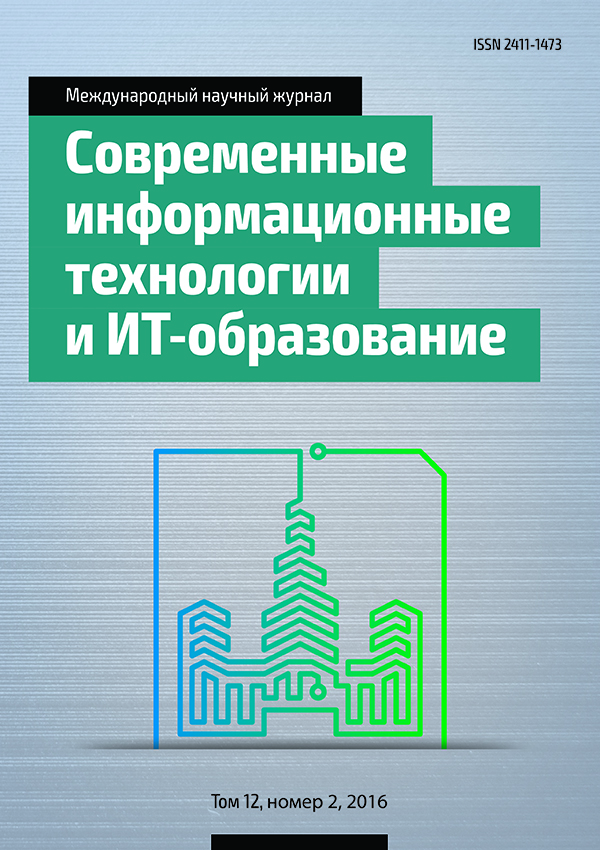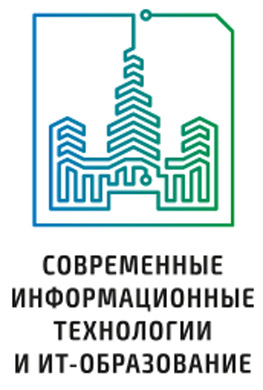APPLYING QUALITATIVE TRAJECTORY CALCULUS TO HUMAN MOTION ANALYSIS: A CASE STUDY TOWARDS ROBOT SOCIAL PATH PLANNING
Аннотация
Qualitative Trajectory Calculus (QTC) offers a powerful set of tools towards selectable-granularity abstraction of relative trajectories of moving entities, while preserving essential aspects of their interaction. In this paper, we present a case study of an application of QTC towards analyzing human motion and interaction patterns in a shopping mall. The ultimate purpose of this study is to use the derived results towards tuning human-aware social path planning algorithms for robots cohabitating and interacting with humans in malls, and in other public spaces. This is increasingly important given the rapid rise of service robots and the need for human-aware navigation which maximizes the safety and comfort of humans while preserving social norms such as proxemics and personal spaces.
Литература
2. Iliopoulos K. et al. From sequence to trajectory and vice versa: solving the inverse QTC problem and coping with real-world trajectories. – AAAI, 2014.
3. Mavridis N. et al. QTC 3D: Extending the qualitative trajectory calculus to three dimensions //Information Sciences. – 2015. – Т. 322. – С. 20-30.
4. Hanheide M., Peters A., Bellotto N. Analysis of human-robot spatial behaviour applying a qualitative trajectory calculus //2012 IEEE RO-MAN: The 21st IEEE International Symposium on Robot and Human Interactive Communication. – IEEE, 2012. – С. 689-694.
5. Vercruyssen V., De Raedt L., Davis J. Qualitative spatial reasoning for soccer pass prediction. – 2016.
6. Chavoshi S. H. et al. Exploring dance movement data using sequence alignment methods //PloS one. – 2015. – Т. 10. – №. 7. – С. e0132452.
7. Edward T. Hall, The hidden dimension. – 1966.
8. Mead R., Atrash A., Matarić M. J. Automated proxemic feature extraction and behavior recognition: Applications in human-robot interaction //International Journal of Social Robotics. – 2013. – Т. 5. – №. 3. – С. 367-378.
9. Kruse T. et al. Human-aware robot navigation: A survey //Robotics and Autonomous Systems. – 2013. – Т. 61. – №. 12. – С. 1726-1743.
10. Sisbot E. A. et al. A human aware mobile robot motion planner //IEEE Transactions on Robotics. – 2007. – Т. 23. – №. 5. – С. 874-883.
11. Gómez J. V., Mavridis N., Garrido S. Fast marching solution for the social path planning problem //2014 IEEE International Conference on Robotics and Automation (ICRA). – IEEE, 2014. – С. 2243-2248.
12. Gómez J. V., N., Garrido S. Social Path Planning: Generic Human-Robot Interaction Framework for Robotic Navigation Tasks //2nd Intl. Workshop on Cognitive Robotics Systems: Replicating Human Actions and Activities. – 2013.
13. Zanlungo F., Brščić D., Kanda T. Spatial-size scaling of pedestrian groups under growing density conditions //Physical Review E. – 2015. – Т. 91. – №. 6. – С. 062810.
14. Forbus K. D. Qualitative modeling //Wiley Interdisciplinary Reviews: Cognitive Science. – 2011. – Т. 2. – №. 4. – С. 374-391.
15. De Kleer J. Qualitative and quantitative knowledge in classical mechanics. – Massachusetts Institute of Technology, Artificial Intelligence Laboratory, 1975.
16. Guerra-Filho G. et al., Discovering a Language for Human Activity// Proceedings of the AAAI 2005 fall symposium on anticipatory cognitive embodied systems, 2005.
17. Kuipers B. G., Qualitative simulation: then and now //Artificial Intelligence 59: 133-140
18. Hagele M. Robots Conquer the World [Turning Point] //IEEE Robotics & Automation Magazine. – 2016. – Т. 23. – №. 1. – С. 120-118.
19. Burgard W. et al. Experiences with an interactive museum tour-guide robot //Artificial intelligence. – 1999. – Т. 114. – №. 1. – С. 3-55.
20. Siegwart R. et al. Design, implementation and exploitation of a new fully autonomous tour guide robot //None. – 2003. – №. LSA-CONF-2003-023.
21. Thrun S. et al. Probabilistic algorithms and the interactive museum tour-guide robot minerva //The International Journal of Robotics Research. – 2000. – Т. 19. – №. 11. – С. 972-999.
22. Clodic A. et al. Rackham: An interactive robot-guide //ROMAN 2006-The 15th IEEE International Symposium on Robot and Human Interactive Communication. – IEEE, 2006. – С. 502-509.
23. Nourbakhsh I. R., Kunz C., Willeke T. The mobot museum robot installations: A five year experiment //Intelligent Robots and Systems, 2003.(IROS 2003). Proceedings. 2003 IEEE/RSJ International Conference on. – IEEE, 2003. – Т. 4. – С. 3636-3641.
24. Macaluso I. et al. Experiences with CiceRobot, a museum guide cognitive robot //Congress of the Italian Association for Artificial Intelligence. – Springer Berlin Heidelberg, 2005. – С. 474-482.
25. Mead R., Mataric M. J. Robots Have Needs Too: People Adapt Their Proxemic Preferences to Improve Autonomous Robot Recognition of Human Social Signals //New Frontiers in Human-Robot Interaction. – 2015. – С. 100.
26. Brandl C., Mertens A., Schlick C. M. Human-Robot Interaction in Assisted Personal Services: Factors Influencing Distances That Humans Will Accept between Themselves and an Approaching Service Robot //Human Factors and Ergonomics in Manufacturing & Service Industries. – 2016.
27. Mead R., Matarić M. J. Autonomous human–robot proxemics: socially aware navigation based on interaction potential //Autonomous Robots. – 2016. – С. 1-13.
28. Canny J. The complexity of robot motion planning. – MIT press, 1988.
29. Barraquand J., Latombe J. C. Robot motion planning: A distributed representation approach //The International Journal of Robotics Research. – 1991. – Т. 10. – №. 6. – С. 628-649.
30. Lozano-Perez T. Spatial planning: A configuration space approach //IEEE transactions on computers. – 1983. – Т. 100. – №. 2. – С. 108-120.
31. Ihaddadene N., Djeraba C. Real-time crowd motion analysis //Pattern Recognition, 2008. ICPR 2008. 19th International Conference on. – IEEE, 2008. – С. 1-4.
32. Cui J. et al. Laser-based detection and tracking of multiple people in crowds //Computer Vision and Image Understanding. – 2007. – Т. 106. – №. 2. – С. 300-312.
33. Zhan B. et al. Crowd analysis: a survey //Machine Vision and Applications. – 2008. – Т. 19. – №. 5-6. – С. 345-357.
34. Brščić D. et al. Person tracking in large public spaces using 3-D range sensors //IEEE Transactions on Human-Machine Systems. – 2013. – Т. 43. – №. 6. – С. 522-534.
35. Mavridis, N., et al. "A novel evaluation framework for teleoperation and a case study on natural human-arm-imitation through motion capture." International Journal of Social Robotics 4.1 (2012): 5-18.

Это произведение доступно по лицензии Creative Commons «Attribution» («Атрибуция») 4.0 Всемирная.
Редакционная политика журнала основывается на традиционных этических принципах российской научной периодики и строится с учетом этических норм работы редакторов и издателей, закрепленных в Кодексе поведения и руководящих принципах наилучшей практики для редактора журнала (Code of Conduct and Best Practice Guidelines for Journal Editors) и Кодексе поведения для издателя журнала (Code of Conduct for Journal Publishers), разработанных Комитетом по публикационной этике - Committee on Publication Ethics (COPE). В процессе издательской деятельности редколлегия журнала руководствуется международными правилами охраны авторского права, нормами действующего законодательства РФ, международными издательскими стандартами и обязательной ссылке на первоисточник.
Журнал позволяет авторам сохранять авторское право без ограничений. Журнал позволяет авторам сохранить права на публикацию без ограничений.
Издательская политика в области авторского права и архивирования определяются «зеленым цветом» в базе данных SHERPA/RoMEO.
Все статьи распространяются на условиях лицензии Creative Commons «Attribution» («Атрибуция») 4.0 Всемирная, которая позволяет другим использовать, распространять, дополнять эту работу с обязательной ссылкой на оригинальную работу и публикацию в этом журналe.













